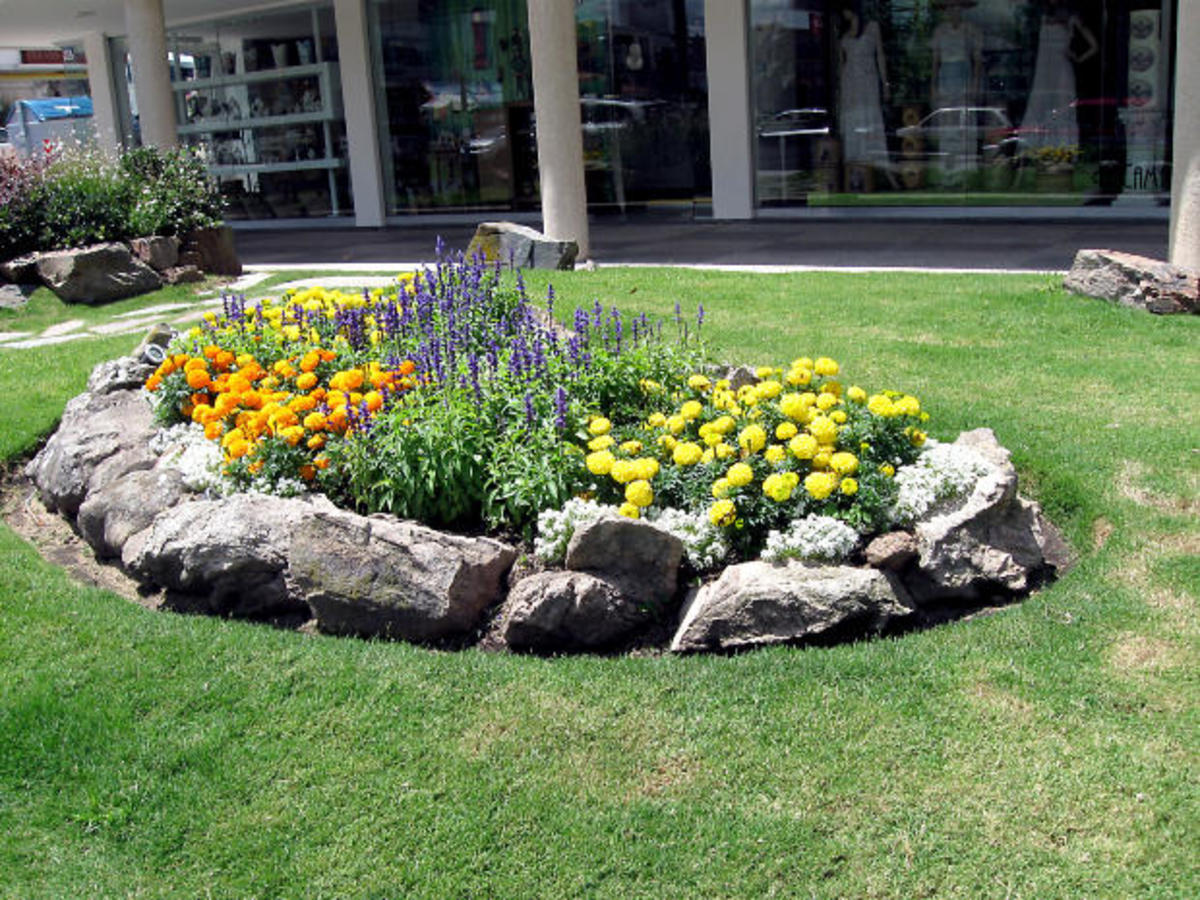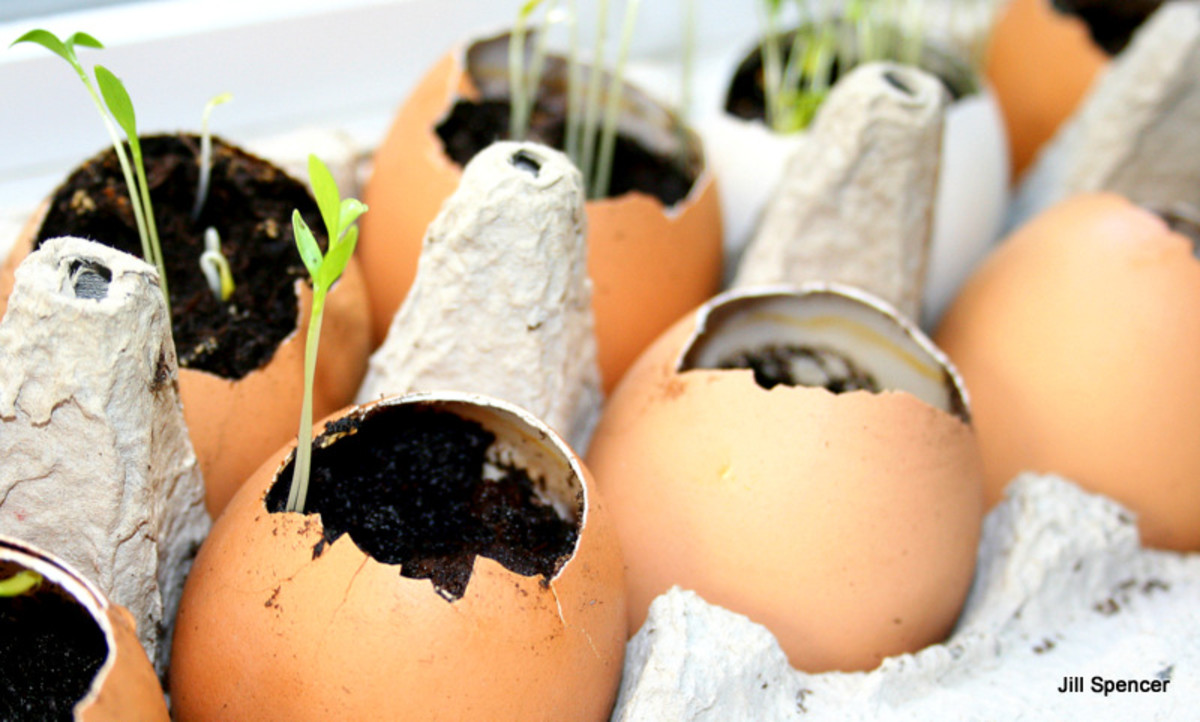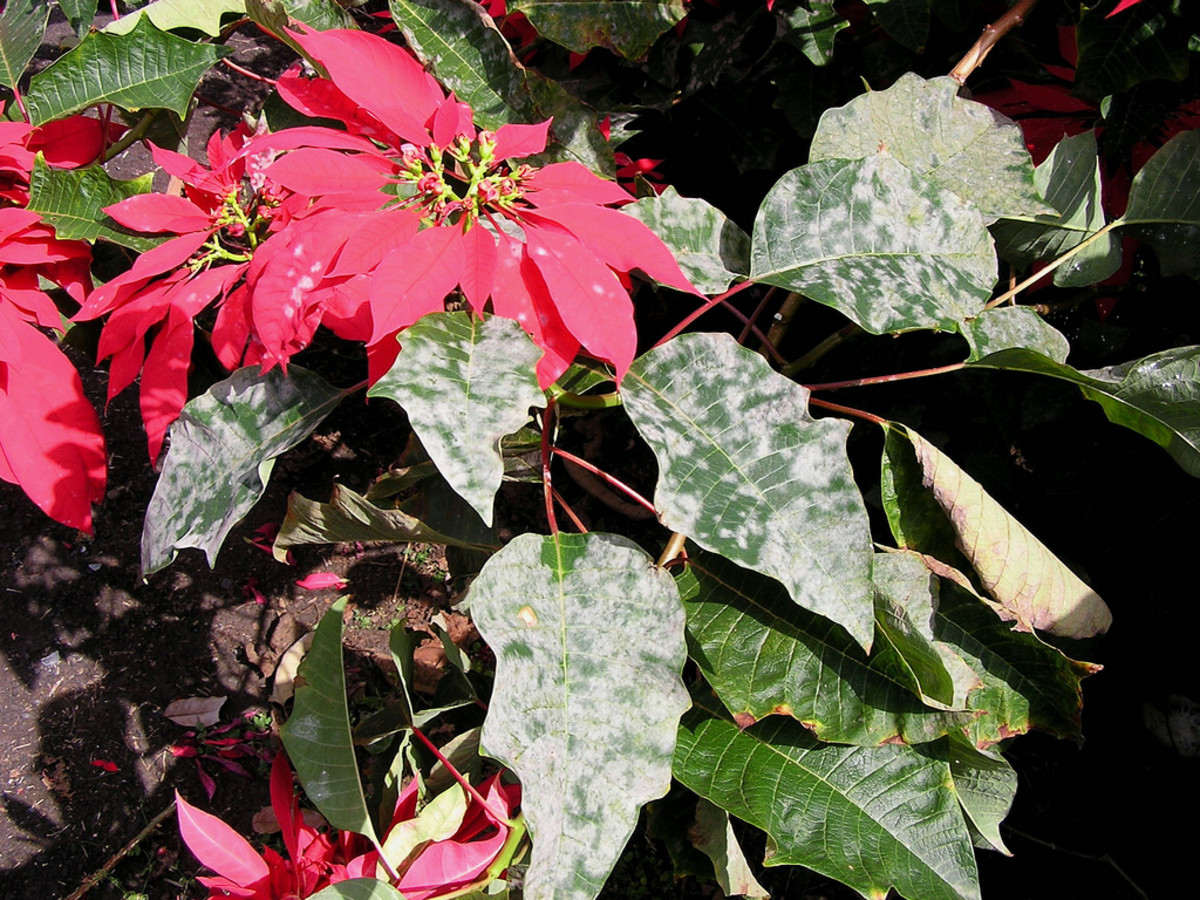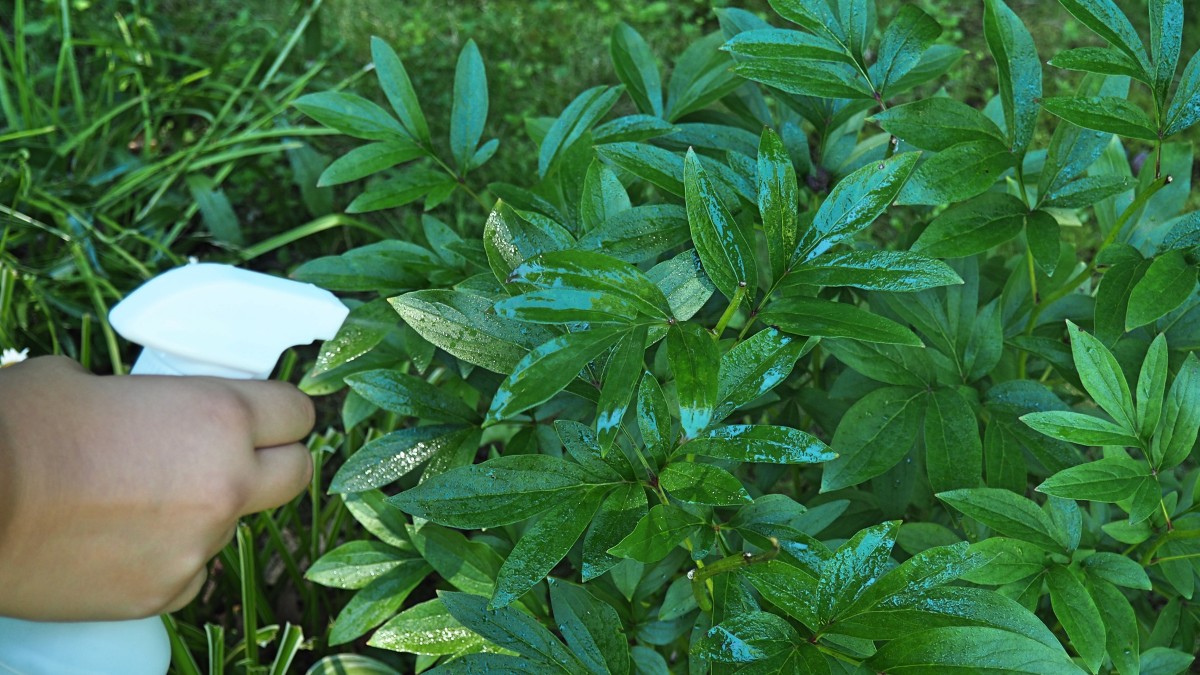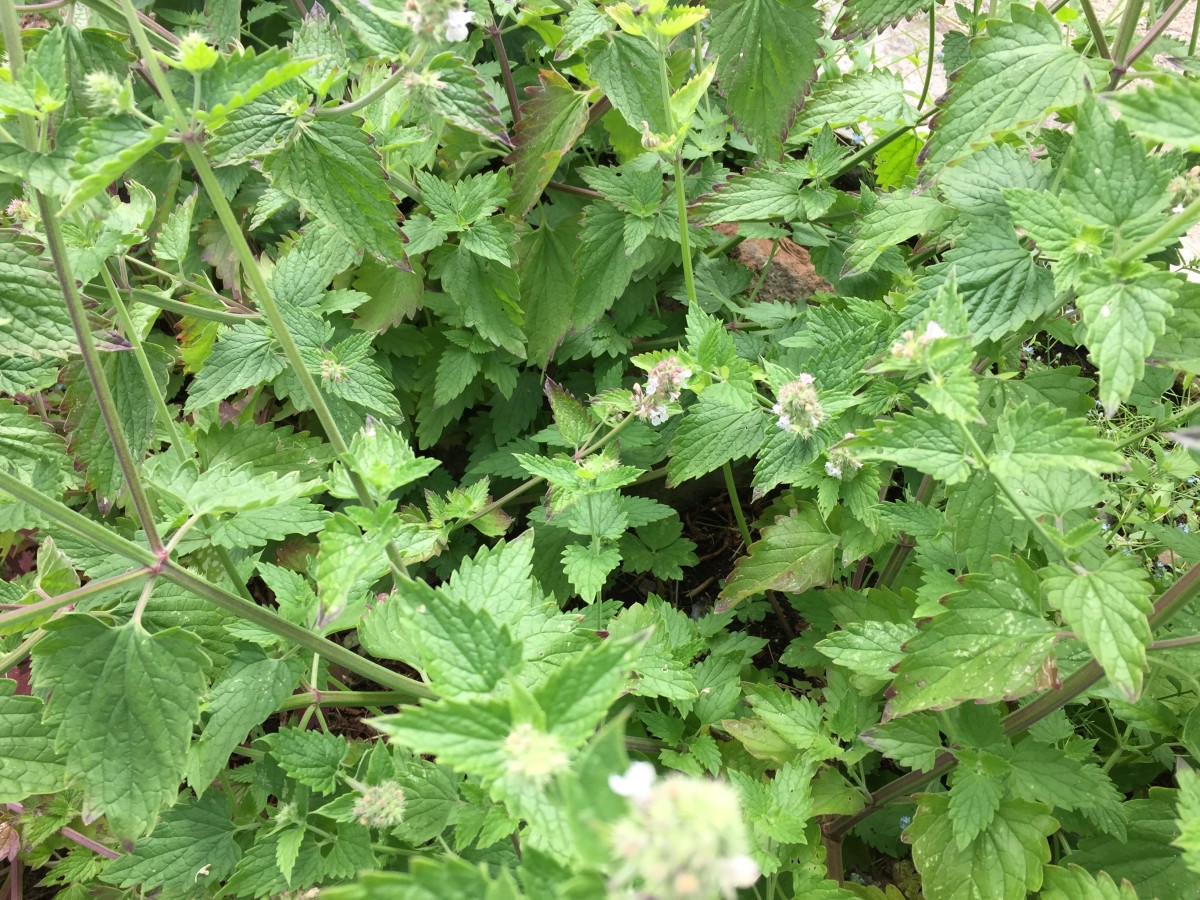How to Start Seeds Indoors
Seedlings Soon to be Transplanted
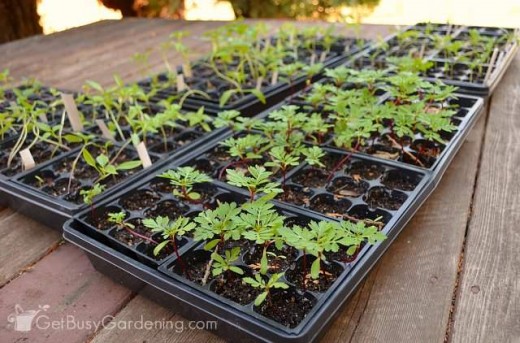
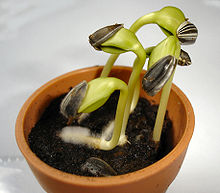
Tips on Starting Your Garden Before the Last Frost
Have you given thought to growing some of the vegetables you normally buy at the super market? You can get a jump on the planting season by starting seeds indoors a few weeks before spring.
The Items You Need to Sow Seeds
- Seedling starter mix
- Small container pots
- Seeds, light, water and heat
Rooting medium - You may use other soils to start seeds in, however, a light and cleaner medium is recommended because it is free of mold and bacteria. This helps to not only assure that the seedlings sprout, but also gives them a good start to withstand the outdoor environment. Starter mix is sold at local nurseries and garden centers.
Container pots - These can be made of plastic, cardboard, ceramic, wood and shaped newspaper. Organic seedling pots can be made out of newspaper and shaped using small models as a mold. Fold newspaper to two or three times the thickness and line the inside of a small container, such as a tuna can or candle holder. The molded paper becomes the seedling pots. Because they are biodegradable, they can be transplanted directly into the garden.
Plastic single-serving yogurt cups with holes punctured in the bottom are handy for starting seeds. Also, plastic inserts from cookie packaging, egg cartons, and actual seedling trays and flower pots can be used. Be sure to put holes for drainage in the bottoms. A four-inch pot can hold up to 20 seeds.
Sowing the seeds - Fill the containers with dampened soil mix two to three inches deep. Plant seeds 1/8 to 1/4 inch deep covered with soil. Label each container, pot and tray with the plant's name. Cover all of the containers with enough clear plastic to hold in moisture.
Watering - Watering is needed every two or three days to retain a level of humidity. Lightly spraying the seeds with a fine mist sprayer is convenient to avoid over-watering the seeds which can cause them to rot. Remove the plastic cover as soon as the first sign of sprouting appears per each container. The rest of the seeds will sprout soon afterward. Any growth of mold spores that can be caused by the plastic cover may harm the seedlings. An optional method to water the sprouts is to set the containers in a plastic tray or bin and fill it with water 1/3 deep. Empty the excess water after ten minutes and repeat once weekly.
Sprouts - Seven to ten days is the average number of days for most seeds to germinate. Most seed companies state the average amount of time it takes for the seeds to sprout on the back of the seed-pack. If your schedule is busy and you might not have time to check for sprouting on a regular basis, you may want to remove the plastic on the seventh day. Assure that the soil stays damp and not drying out, and that the temperature remains between 68 and 75 degrees Fahrenheit (21 Celsius).
Light - Positioned at a window that faces to the south, or under grow lights or fluorescent lighting for 12 to 14 hours every day. The distance for artificial light should be as close as possible with three to four inches of space in between. A timer can be helpful setting it for 14 hours on and 10 hours off.
Transplanting to Larger Pots
Re-potting - Fill 4" pots with dampened potting soil and label each. Apply a faint amount of fertilizer or compost being careful that fertilizer doesn't touch the plant. Place them out of direct sunlight for a few hours during the day for seven days. This will acclimatize them to the full strength of the sun for their lifespan outdoors. White or light color spots on the leaves may indicate an over-exposure to the sun.
Tomato plant stems are stronger when they've been re-potted three or four times before transplanted outdoors.
Acclimating - This procedure allows the plants to adapt to the outdoors a little at a time. Begin one to two weeks before transplanting into the garden. Transfer them outside on a shady day in an area where it is not windy for one or two hours, then return them indoors. Repeat when your schedule permits adding an hour each day.
Be gentle with the stems and roots, the leaves are not as important because they can grow back. Touching tomato leaves when they are wet increases the risk of mold. A good soak from the bottom of the pots for ten minutes once a week as mentioned above, will keep water off the seedlings.
Garden plan - Outline a sketch on paper of the locations for each plant, flower and vegetable. Consider whether you need a trellis or chain-link fence for vines such as peas and squash, and stakes for tomato and cucumber. Refer to the seed packs for sun, shade and water recommendations. The companion planting method helps the soil retain nutrients and keeps pests to a minimum.
Turn or loosen the soil eight to ten inches deep. Add fertilizer according to what is suggested on the seed packs and level the soil with a garden rake. Spread a thin layer of either compost or topsoil over the top. If time permits, allow two or three days for the micro-organisms to mingle and settle.
Transplant to the Garden
The forecast for the last frost in the region where you live can be obtained by an Internet search. If you drew up a diagram, refer to it as a guide and transplant accordingly. Plant deep enough to cover all the roots then give the soil a good watering. Some seedlings may droop a bit at first, but they usually perk back within a few days. Coffee adds calcium and other nutrients to the soil. If you drink coffee and have some left, you may wish to water some plants with it after it cools.
Vegetable Guide for When to Sow Seeds
Indoor six to eight weeks before the last frost:
Cabbage, broccoli, cauliflower, peppers, parsley, onion, celery, chives and artichokes.
Start eggplant in a 4" pot only because they don't transplant well; also direct-seed eggplant outdoors in late March.
Indoors four weeks before the last frost:
Tomato seeds generally grow fast and grow the most in temperatures of 68 to 78 degrees Fahrenheit. Re-potting three to five times before transplanting makes the stems stronger.
Cucumbers, melons, squash, pumpkin, and okra.
Outdoor direct-seed in February and March:
Peas, carrots, spinach, potatoes, summer turnips, beets, onion sets and radish.
Outdoor direct-seed in April:
Lettuce and Swiss chard.
Outdoor direct-seed after date of last frost:
Beans, corn and watermelon, cucumber, squash, pumpkin and okra.
To maintain a sense of ecological harmony in your garden, it is helpful to include Marigolds and various flowers and herbs in with vegetable plants. This has to do with companion planting which is to grow certain plants next to others that assists in their growth.
Growing a vegetable garden is a learning process, so allow yourself room for trial and error. Getting an early start expands the growing season allowing time for more plants to grow. Growing your own food is a healthy, economical and rewarding experience.
Lizolivia




